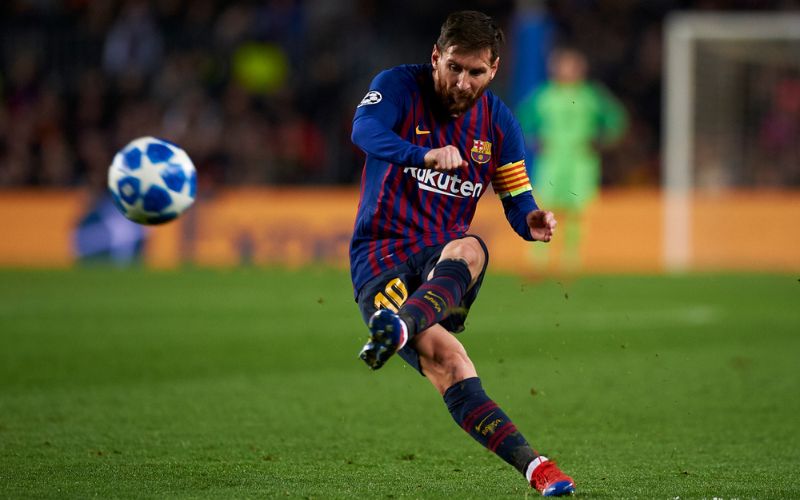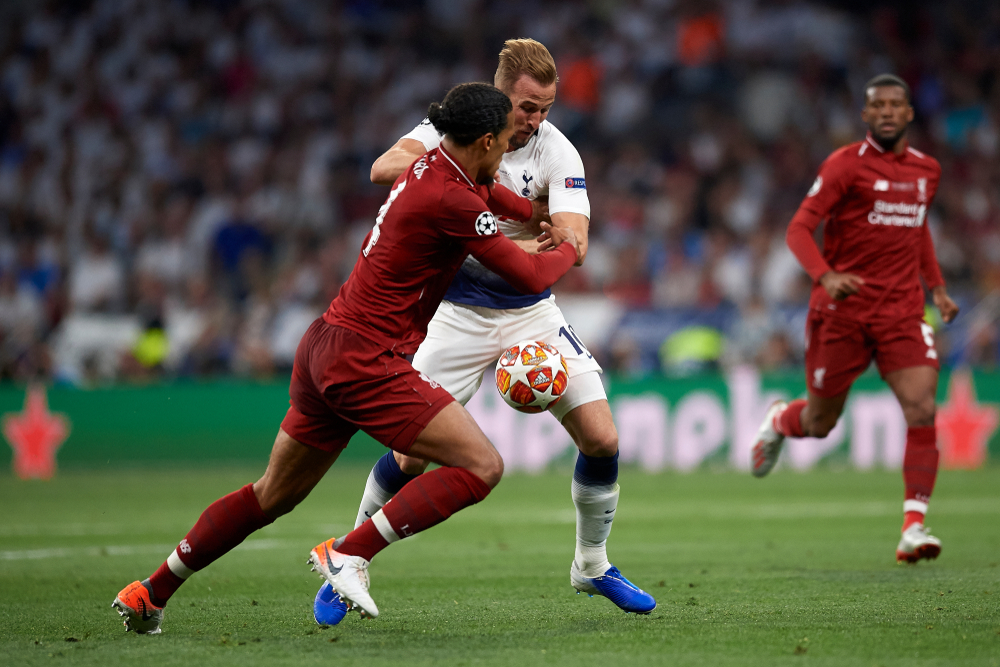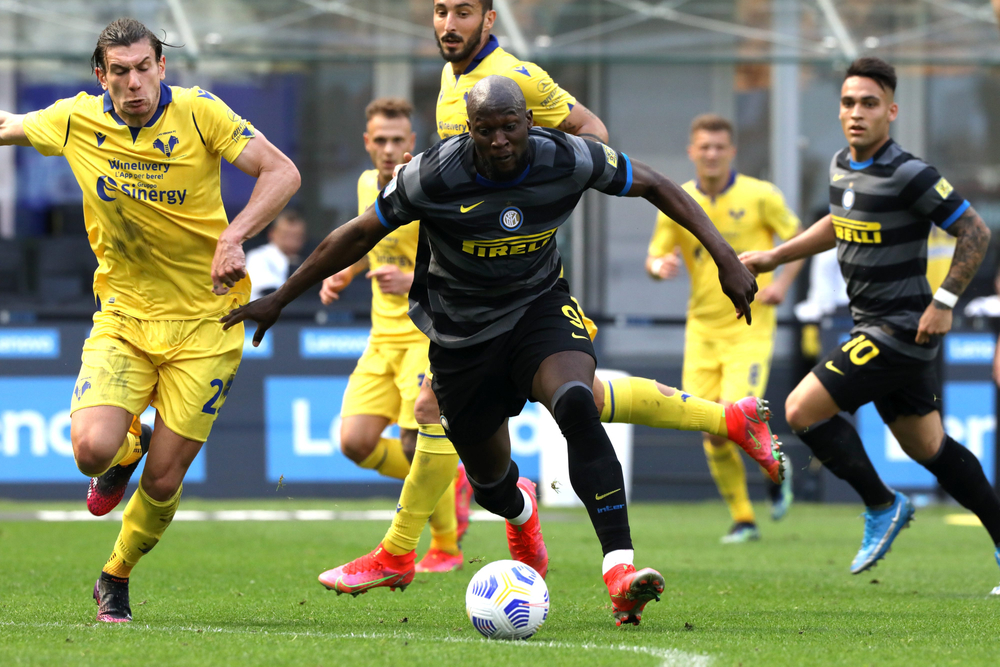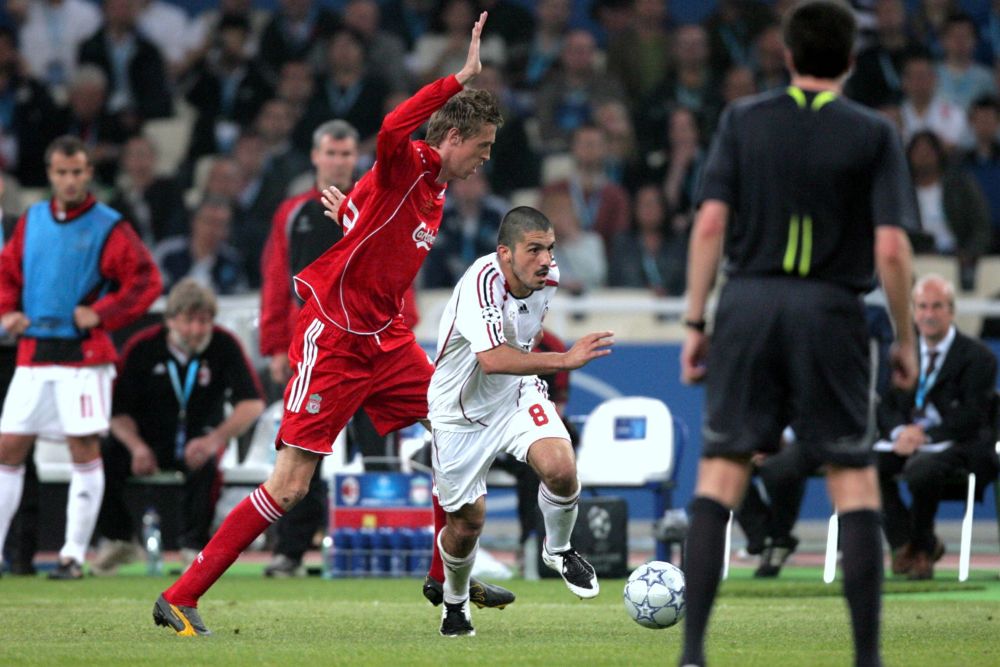Soccer is a demanding game, requiring a mixture of talent and physical strength to make runs, dribbles, tackles, and take shots in a match. Hence as talent is nurtured from its discovery, strength should also be built to utilize the talent correctly.
This is a delicate balance that should be achieved as tilting to one side or the other limits the general output of a player.
For example, a physically weak skillful player will have difficulty lasting the entire match length. While a highly athletic player only is helpful in limited roles on the field of play.
This article hopes to answer questions like “Do soccer players lift weights ?”, if they do, why do they do it? What are the benefits attached to lifting weights?
Answering this question will help inform you; should you be desirous of playing soccer and improving your all-around ability in the game.
Quick Navigation
Do soccer players lift weights?
Yes; soccer players lift weights. In fact, the foremost reason is for strength training. Regular workout routines can help keep an individual healthy, but to thrive in the game of soccer, you need much more than basic fitness routines.
Strength training gives you an advantage over the opposition, helping you stay physically ready and mentally switched on for the soccer match.
In addition, stronger players tend to bully the opponent in one-on-one situations giving their team an edge.
Strength enhances skill, giving it the needed platform to thrive. Hence its importance for a soccer player cannot be over-emphasized.

Should soccer players lift weights?
Of course, soccer players should lift weights to enjoy the many advantages of strength training.
Most teams include regular visits to the gym as part of their daily routines. Choosing not to take advantage of weight lifting puts your team at the mercy of your opponents.
Physical teams tend to dominate the opposition in set plays. Most teams generally aim to balance physical strength and technical ability on and off the ball.
Weight lifting helps a team settle the physical side of the game.
Benefits of weight lifting for soccer players
What are the benefits and how do they affect soccer players?
These benefits help players adapt quickly to different situations where they may have to play for an extended period than initially expected.
Power
Several movements in the soccer game require a certain amount of force. These forceful movements, such as running and jumping, are maximized when the right amount of power is applied to pull them off.
Sprint speed and how high a player can jump are improved when the thigh muscles are well developed. In addition, lifting weights helps enhance the power a player makes these motions.
Generating the explosive power needed for these motions puts a player a class above the norm.
Top athletes in the game are known to possess the ability to make long forceful runs that leave the oppositions scrambling. Often the opponent has no choice but to commit a foul to bring these players down.

Injury prevention
Another benefit of strength training is more excellent resistance to injuries. Lifting weights puts the body in a rhythm that makes it capable of handling everything that’s thrown at it. Weight lifting involves several rotational movements that mimic in-game motions.
The muscles built during these exercises also help increase the knee flexion angle, which allows for a softer landing after jumps. Weight lifting also helps stabilize the powers of essential joints, such as the ones of the hips and knees.
Strength training also helps in avoiding muscle strains that plague soccer players. The impact of collisions can be pretty devastating. Strength training helps put a player in a position where they are less likely to be the one to come off injured.
Several weight lifting routines also help in building neck strength. Neck strength is crucial in protecting against head injuries as the neck helps absorb the impact of a collision with the head.
Kick distance and velocity
The muscles of the calf and the thighs all contribute to the power generated in a kick. Strength training helps build the muscles in these areas, ultimately improving how hard a player can hit the ball.

When players build these muscles, they also kick the ball for longer ranges. As a result, the ball also moves with a higher velocity. This improvement is significant in taking set-pieces and dead-ball situations.
Better balance
Strength training using weights also helps in improving the balance of a player. Having a strong core ensures that a player is more assured in possession.
The majority of on-field movements will have you switching lanes and frequently changing directions as the match goes on. Again, weight lifting helps a player stand firm and maintain posture when making these turns.
Balance is all about controlling your body and being one with it. Weight lifting as a form of strength training helps a player understand the boy better.

Flexibility
Soccer players make a lot of rotational movements, which will require the stretching of several muscles in different parts of the body. These muscles are prone to wear and tear when worked beyond the regular limits they are accustomed to.
This is why the use of weights is vital, inadequately conditioning the muscles so that a player’s flexibility is fully enhanced. This allows the player to make a wide range of movements without getting injured.
Movement patterns weigh heavily on joints and the muscles surrounding these joints. Weight lifting helps prepare the body for impact to these regions, ensuring that the players land softly after making tricky turns as demanded by the game’s flow.
Quicker recovery
Weight lifting allows players to push and identify boundaries. Pushing limits helps fine-tune your body till it gets to its peak. This ensures that your body recovers more quickly than when you are not in your best shape.
The rhythm created allows the body to react quicker to damages. As a result, players that heal quickly are more likely to become a valuable asset to the team than ones that spend long periods on the injury table.
A player’s recovery time is dependent on the energy stored before the injury and the general fitness of the whole system. Weight lifting and other available exercise routines get the blood pumping and the heart racing in a way that prompts a quick reaction to anomalies.
Increased endurance
Soccer matches are 90-minutes long. In some cases, if it’s a knock-out competition, this time may be extended to 120 minutes, quite a long time, you would agree. Hence it is essential to have a body that keeps going for long periods without reducing efficiency.
Weight lifting helps players develop a high level of muscular endurance when performing activities like kicking, sprinting, jumping, and moving in different directions. The goal is not entirely to bulk up but to have well-toned muscles that are just right for you.
Players are empowered to give 100% for the entire duration of the match when their stamina has been thoroughly built by hours spent on core training. This puts you and your team at an advantage as you can pick holes in the opposition, which may be waning at this match period.
Players in peak physical condition can make long runs from one end of the pitch to the other when they have spent quality time in the gym stretching their muscles to limits that enable them to stand out on the field of play.

Confidence
Soccer goes beyond having a fully functional body, and you also need to be of the right mind to give your best in matches constantly. This is where having a high level of confidence comes in.
Weight lifting as a form of strength training helps improve your general health and self-confidence as you worry less about injuries or being overpowered on the field of play. As a result, you tend to play with a more relaxed mind which helps in further unlocking your potential.
Drawbacks (or risks) of weight lifting for soccer players
Despite the many advantages of weightlifting, it also comes with certain disadvantages when not done correctly. You will always find cases where there is little or no supervision by health experts, leaving players to use their discretion which is not always safe.
This is why weightlifting should be done in a controlled environment under the close supervision of experts—this helps in safeguarding the players, keeping them functioning at their best possible levels.
Uneven upper body to lower body ratio
Striking a balance between how much muscle mass you gain between the upper and lower regions of your body helps in preserving your balance and flexibility.
Unfortunately, far too often, you find cases where weightlifting results in over bulking one part more than the other.
This reduces a player’s balance and makes it more likely to fall over on impact.
It also tends to overwork the underdeveloped region of the body so that its efficiency is reduced with time.
Stunted growths in young athletes when done excessively
For younger athletes and teenagers, weightlifting is not advisable as it interferes with the natural growth rate of the young player.
For a player who is on supplements and growth hormones, it is advisable to put off weight lifting of any kind.
Increased proneness to muscle tears
Lifting heavy weights can stretch a muscle beyond its limit and lead to a tear. This muscular injury is capable of keeping a player out of a game.
More calories are burned hence greater consumption of food
Generally, the more work you put your body through, the more calories it has to consume to keep you going.
This implies that there may be an increase in the amount of food you consume or a complete change in your diet plan to accommodate food that is high in calories.
Increased chances of ligaments and tendon damage
The ligaments and tendons work in partnership with the muscles when making several movements. Weightlifting tends to stretch these tissues beyond breaking point when they are overworked.
Fatigue on match days
Long hours spent in the gym are usually followed by long hours spent in recovery. This is because the body needs time to build the muscles developed, and when this period is not allowed, a player gets fatigued. This is why an adequate rest period is essential after strength training.
Conclusion

Weight lifting has been proven to be of great benefit to soccer players. As earlier stated, it helps them create a foundation for the showcasing of their many abilities.
To get the best out of this exercise, it is advisable to keep in mind that the goal isn’t to bulk up a player heavily but to create a perfect synergy between physical strength and skill.
This will help develop an all-around sound player capable of maintaining efficiency and durability.
Hi there, I’m Jay.
Soccer is everything in my life! My friends and I have created this blog with all our enthusiasm, passion, and understanding after years of playing pro soccer. Hope you will enjoy it!
